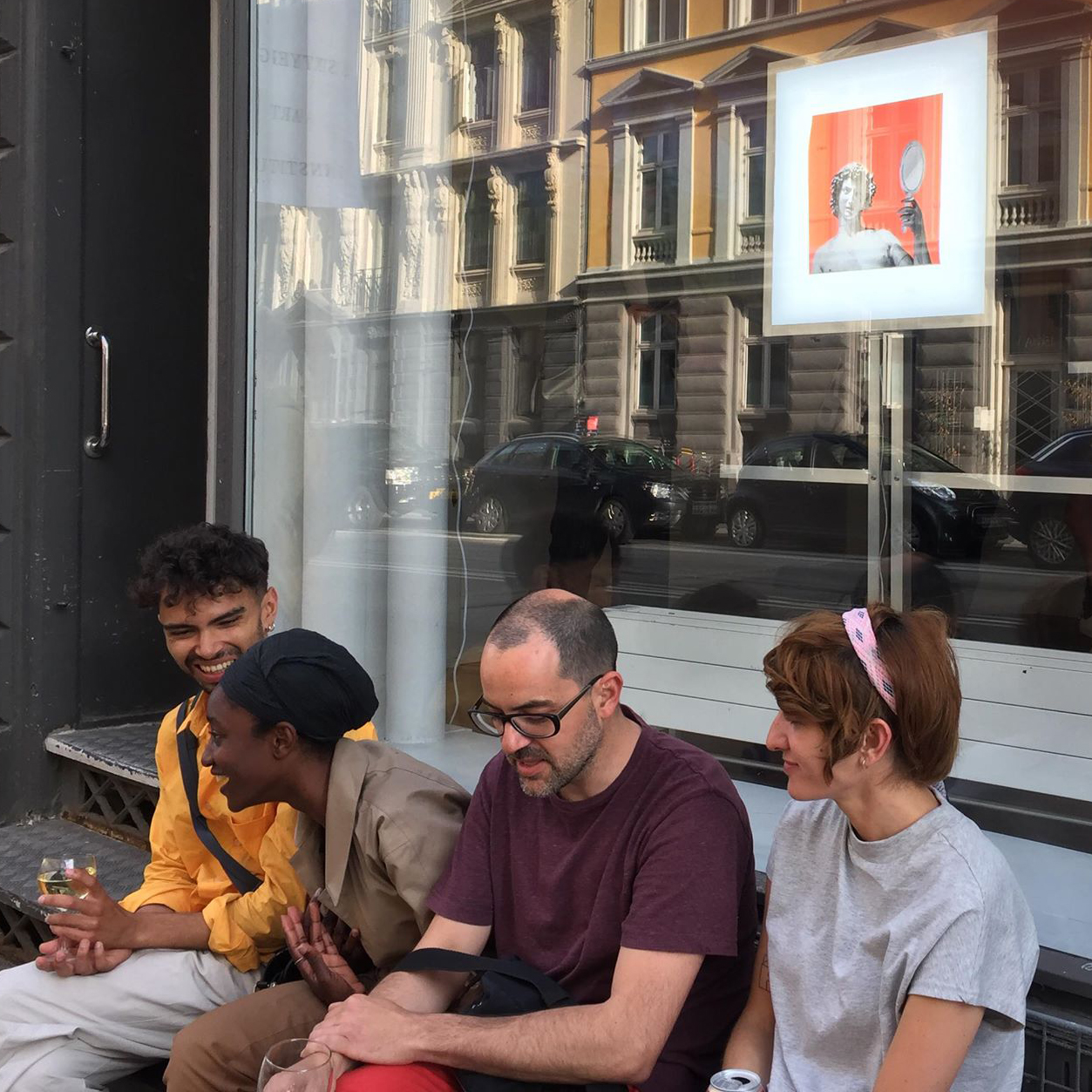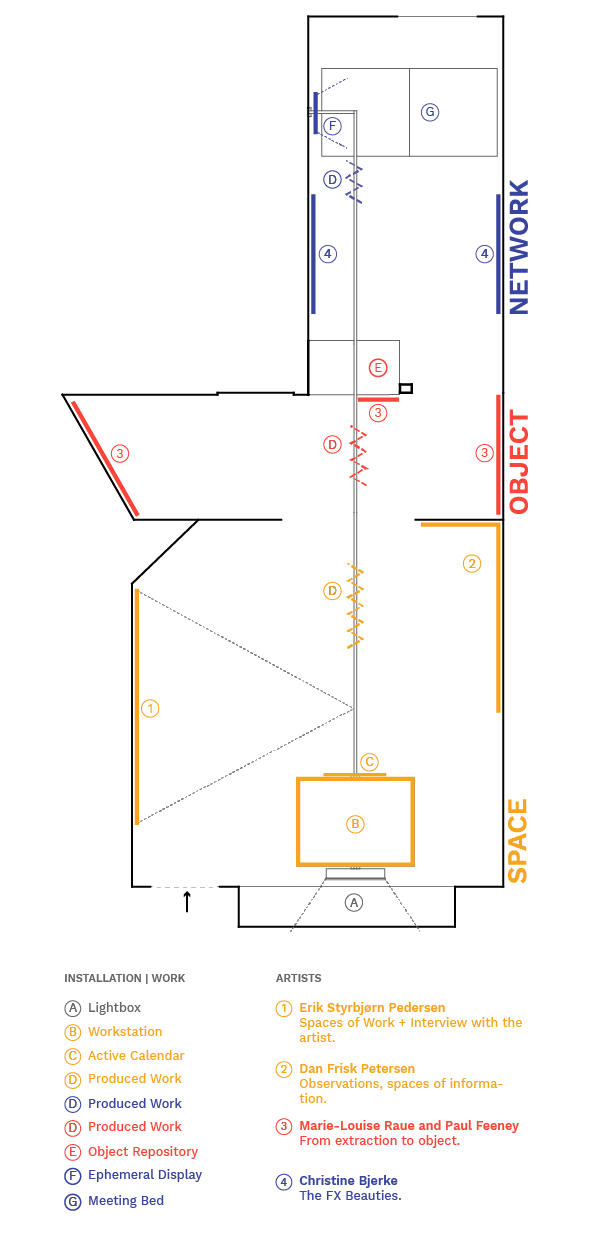THE WORK OF LIVING LABOUR
“Labour is the living, form-giving fire, it is the
transitoriness of things, their temporality, as their
formation by living time”
Karl Marx (Grundrisse)




Work defines the modern world in a more encompassing manner than any other activity. It does not include every productive activity, but rather the ones that are socially recognised as producers of value. The organisation of everyday life is orchestrated by the structural system of work. Despite the decreasing presence of the factory as a symbol for spaces of production, its logics have entered every single space of life. The subjectivity of every human being has become intertwined with productive labour, the subject has become productive as much as it has become the product itself. Work is, in fact, an activity that pervades everyone’s lives whilst it is mostly left unquestioned.
Work as we know it today is deeply challenged by the increase of productivity, automation, climate change, and many other factors that will inevitably force governments, business, unions and individuals to question how work will be produced in the future. To challenge the current organisation of work requires a confrontation not only with the political influence of work but also its moralisation. Work does not simply exist out of economic necessity but is widely instantiated by individual moral practice and as a collective obligation.
The challenges faced by our mode of production bring into question the very essence of capitalist production: living labour. Living labour can be defined as the potentiality of production, in its broadest form, by each human being. As noted by Kathi Weeks in “The problem with work”, living labour can provide a critical standpoint from which the alienating and exploitative conditions of modern work can be critically interrogated, and its potentials can inform speculations about the transformation of these conditions. Living labour becomes a framework for speculation about alternatives to our current mode of production while creating narratives that can confront the present organisation of work and the discourses that support it.
The Work of Living Labour is a process-oriented and performative exhibition that uses a re-conceptualization of living labour as a point of departure for a broadened reflection on and discussion of the current and future status of our production system and the spatial, socio-political and aesthetic responses associated with it. Can new scenarios be thought to actively shape new ways of working, to produce the material and immaterial world we live in? What kind of relations and qualities do we want to see emerge in the future role of work?
The exhibition is conceived as a juxtaposition between a live performative installation about work and the contribution of artists that document, interrogate and expose the role of work in society today. The exhibition is divided into three scales of exploration: Space, Object and Network.
Each artist’s contribution will bring a new perspective to the understanding of work and will respond to the thematic categories of each space of the exhibition. With a different approach, the performers will work throughout the duration of the exhibition, producing live responses to the themes, enabling work-routines and happenings that become a platform for public engagement.
The installation spatialises the curatorial strategy of the exhibition, it links the artists’ contributions to the performance of work, framing different scenarios where meeting, presenting, reading and production can take place throughout the duration of the exhibition.
The installation choreographs the different thematic scales of the exhibition:
Space
The Space investigates the evolution of workspaces in connection with how production systems evolve, across time and space. Erik Styrbjørns Pedersen’s contribution takes the form of a video installation, where an interview with the artist exposes his thoughts on the status of work in society over time while it showcases different artistic explorations on the spatial relationship between human, machine and workplace. Responding to the same theme, Dan Frisk Petersen’s photographs explore the spatiality and complexity of self-driven infrastructural spaces in public buildings, transport platforms and power plants. The two artists both visualise hidden spaces of work that sustain everyday life in society while differentiating whether it is human or machine driven.
Object
The Object explores the interaction between body and device, space and material as the starting point for a broader reflection on the processes of extraction, commodification and creation that are immediate or abstracted from our daily lives. Paul Francis Fee
ney, Marie-Louise Raue and Christopher Sucarrat Lunde contribute with an atlas of quarrying as a site of production at a geographical scale, while linking it to the material foundations of society through a multi-scalar media reconstruction of the symbolic, structural and geopolitical meanings of different materials.
Network
The Network visualises the structural system, cultures or policies that produce the idea of how we perceive work today. It highlights the decision makers, processes and innovations that have led to different work scenarios and organisational or territorial outputs. Christine Bjerke exhibits the symbolic connections associated between culture, work and information through her project The FX Beauties. The FX Beauties are an online trading collective of around five million Japanese women—mostly housewives. By reworking the relationship between domesticity, cultural gender politics, financial systems, and decentralized networks, the FX Beauties demonstrate both the fragility and fortitude of gender norms in a neoliberal economy, as well as the ways that digital spaces encroach on domestic ones.
![]()
The installation spatialises the curatorial strategy of the exhibition, it links the artists’ contributions to the performance of work, framing different scenarios where meeting, presenting, reading and production can take place throughout the duration of the e




Artist contributions from:
Erik Styrbjørn Pedersen; Dan Frisk Petersen; Marie Louise Raue, Paul Feeney and Christopher Sucarrat Lunde; Christine Bjerke.
With the generou support of: Københavns Kommune, Danish Arts Foundation, Alumeco, Dynamostol and Kvadrat.
The exhibition has been conceived by reWork and is hosted by SixtyEight Art Institute.
June/July 2019.
Erik Styrbjørn Pedersen; Dan Frisk Petersen; Marie Louise Raue, Paul Feeney and Christopher Sucarrat Lunde; Christine Bjerke.
With the generou support of: Københavns Kommune, Danish Arts Foundation, Alumeco, Dynamostol and Kvadrat.
The exhibition has been conceived by reWork and is hosted by SixtyEight Art Institute.
June/July 2019.
